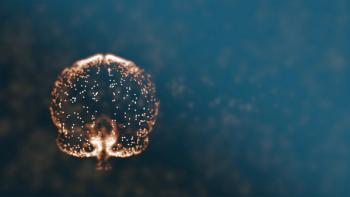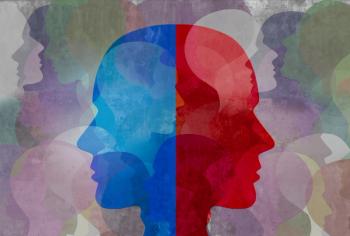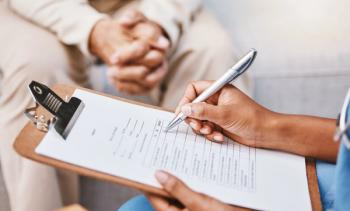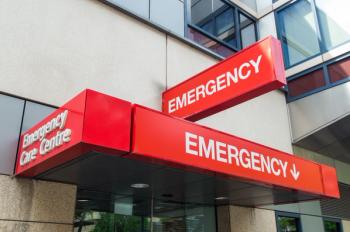
- Vol 39, Issue 11
Thinking Beyond the Guidelines: Evidence-Based Novel Therapies for Bipolar Depression
In this CME article, learn how to apply novel treatment approaches for patients with bipolar depression.
CATEGORY 1 CME
Premiere Date: November 20, 2022
Expiration Date: May 20, 2024
This activity offers CE credits for:
1. Physicians (CME)
2. Other
All other clinicians either will receive a CME Attendance Certificate or may choose any of the types of CE credit being offered.
PART TWO ACTIVITY GOAL
The goal of this activity is to help readers understand and apply novel treatment approaches for patients with bipolar depression.
PART TWO LEARNING OBJECTIVES
1. Evaluate nonpharmacologic and pharmacologic treatments for bipolar depression.
2. Distinguish evidence-based novel treatments for bipolar depression.
TARGET AUDIENCE
This accredited continuing education (CE) activity is intended for psychiatrists, psychologists, primary care physicians, physician assistants, nurse practitioners, and other health care professionals seeking to improve the care of patients with mental health disorders.
ACCREDITATION/CREDIT DESIGNATION/FINANCIAL SUPPORT
This activity has been planned and implemented in accordance with the accreditation requirements and policies of the Accreditation Council for Continuing Medical Education (ACCME) through the joint providership of Physicians’ Education Resource®, LLC, and Psychiatric Times™. Physicians’ Education Resource®, LLC, is accredited by the ACCME to provide continuing medical education for physicians.
Physicians’ Education Resource®, LLC, designates this enduring material for a maximum of 1.5 AMA PRA Category 1 Credits™. Physicians should claim only the credit commensurate with the extent of their participation in the activity.
This activity is funded entirely by Physicians’ Education Resource®, LLC. No commercial support was received.
OFF-LABEL DISCLOSURE/DISCLAIMER
This accredited CE activity may or may not discuss investigational, unapproved, or off-label use of drugs. Participants are advised to consult prescribing information for any products discussed. The information provided in this accredited CE activity is for continuing medical education purposes only and is not meant to substitute for the independent clinical judgment of a physician relative to diagnostic or treatment options for a specific patient’s medical condition. The opinions expressed in the content are solely those of the individual faculty members and do not reflect those of Physicians’ Education Resource®, LLC.
FACULTY, STAFF, AND PLANNERS’ DISCLOSURES AND CONFLICT OF INTEREST (COI) MITIGATION
The staff members of Physicians’ Education Resource®, LLC, and Psychiatric Times™ and the authors have no relevant financial relationships with commercial interests.
None of the staff of Physicians’ Education Resource®, LLC, or Psychiatric Times™ or the planners of this educational activity have relevant financial relationship(s) to disclose with ineligible companies whose primary business is producing, marketing, selling, reselling, or distributing health care products used by or on patients.
For content-related questions, email us at
HOW TO CLAIM CREDIT
Once you have read the article, please use the following URL to evaluate and request credit:
(This is the second part of a 2-part article discussing novel treatments for bipolar depression.
Bipolar depression (BD) can be difficult to treat due to several factors, and choosing the most appropriate treatment approaches should be based upon patient-specific factors (eg, comorbidities, preferences). Based on treatment response and these patient-specific issues, there are a variety of nonpharmacologic therapies and novel pharmacologic options that can be considered as part of the treatment plan.
Nonpharmacologic Interventions
Although many clinicians tend to focus on pharmacologic treatments for BD, nonpharmacologic interventions have been shown to be effective in bipolar depression, many of which contribute to an overall healthy lifestyle and can be recommended in addition to medications (
Chronotherapeutic treatments. The International Society for Bipolar Disorder recommends the use of chronotherapeutic treatments.1 Its guidelines recommend the use of bright light therapy and sleep deprivation/wake therapy for BD and dark therapy for mania. Several meta-analyses and systematic reviews found positive results for bright light therapy in BD.2-4 Although studies are relatively small, bright light has few to no adverse effects and should be considered for patients who have the resources to purchase a light box. In several meta-analyses, the brightness of the light box and length of time utilized varied, depending on the study. In most trials, the light provided ranged from 2500 to 10,000 lux, and the administration time ranged from 7.5 to 60 minutes delivered upon awakening in the morning.2-4 Participants were maintained on medication regimens during the studies. Clinicians should be aware of the hypothetical risk for affective switching; however, based on available studies, the risk is minimal.
There is limited evidence that
The use of blue light-blocking sunglasses in the evening reduces depressive and manic symptoms.4 If patients have difficulty following the sleep deprivation and light therapy protocols, a middle ground might include wearing blue light–blocking glasses in the evening starting at 7 PM and doing bright light therapy every morning. Blue light–blocking sunglasses can be purchased for about $10, and light boxes with the appropriate specifications can be purchased for $100 to $200. There is some variability in
The cost of the light box may be prohibitive for some patients. In those cases, clinicians should adapt suggested interventions to meet the patient’s needs. For example, patients may be able to sit outdoors in bright sunlight for 15 to 30 minutes in the morning.
Physical exercise. Exercise has been shown to reduce inflammatory markers, and physical activity may be beneficial in BD. For example, Paolucci et al studied 61 university students engaged in various levels of exercise intensity.7 The investigators found moderate, continuous exercise produced the best results. Participants reported reductions in depression and anxiety, and they had lower levels of inflammatory markers. Of note, high-intensity interval training also improved depression, but it increased the participants’ perception of stress and increased the inflammatory markers TNF-α and interleukin-6.
According to available literature related to the impact of
Smoking cessation. Data related to cigarette
Although there is no evidence that smoking cessation will treat BD successfully, it makes sense to encourage all patients to
There are no concerning drug interactions with varenicline or bupropion and medications typically used to treat BD, but clinicians should be aware that cigarette smoking is a cytochrome P450 inducer. If patients quit smoking, the blood levels of some psychotropics can increase. Because the effect is related to smoking itself, the same interaction does not exist with nicotine replacement therapy.
Dietary interventions. Healthy dietary patterns improve overall health and reduce symptoms of psychiatric illnesses.8,12-15 Specifically, the results of numerous studies have shown that following an anti-inflammatory diet can improve overall health and, potentially, psychiatric symptoms.
Implementation of the Mediterranean diet and MIND (Mediterranean-Dietary Approaches to Stop Hypertension [DASH] Intervention for Neurodegenerative Delay) diets has anti-inflammatory properties. The Mediterranean diet is rich in antioxidants and flavonoids. It uses liberal amounts of whole grains, fruits, vegetables, nuts, olive oil, and omega-3 fatty acids, primarily through the consumption of fish. The MIND combines the benefits of the DASH, which was developed to prevent cardiovascular disease. It encourages reduced consumption of saturated fat, sodium, and sugar intake and promotes healthy proteins, whole grains, fruits, and vegetables. All of these diets have a variety of health benefits and anti-inflammatory properties that may aid in relieving depressive symptoms. Additionally, they may help combat the metabolic effects of numerous psychiatric medications.
When counseling patients about
Supplements and nutraceuticals. The results of several studies have noted that use of various dietary supplements may benefit patients diagnosed with BD and unipolar depression. Inflammatory state alterations reflective of microbiota alterations in the gastrointestinal (GI) system are present in many psychiatric conditions, including BD.16 Probiotics modulate stress hormones, increase brain-derived neurotrophic factor (BDNF) and serotonin levels, and reduce inflammation.17 The brain-gut axis involves pathways including the parasympathetic nervous system, the immune system, the gut neuroendocrine system, and neurotransmitters produced in the gut.17 For example, a large portion of endogenous serotonin is manufactured in the GI tract. Serotonin modulates the blood-brain barrier and vagal nerve activity.17
Currently, evidence in humans on this topic is limited to observational studies. Probiotic supplementation may have a role in improving BD; current research, however, is limited by small trials and methodologic variability.15,18,19
Other supplements that have been studied in managing BD and unipolar depression include coenzyme Q10, inositol, and several vitamins and minerals.13,21 However, the evidence on these agents is very limited and has shown mixed findings. At this point, treatment recommendations cannot be made based on the research.
Use of L-methylfolate also may be considered as an adjunctive treatment.24,25 When folate and lamotrigine were combined in 1 study, lamotrigine became clinically ineffective; however, this finding has not been replicated.26 There are no other known drug interactions with these supplements.
Brain stimulation. Transcranial magnetic stimulation (TMS) can be considered when standard treatments fail.27 Clinicians should be aware of a risk for psychomotor agitation in patients with BD who are treated with TMS. Currently, several FDA-approved devices are being used in patients with BD, and TMS is being used more commonly in this patient population.
Deep brain stimulation (DBS) has been studied for BD, and has shown promising results.28 Several small studies showed that DBS provided significant improvement in depressive symptoms among patients with BD.28 Among the studies, there was no consistent brain area of focus for the DBS treatment; in TMS, on the other hand, the left dorsolateral prefrontal cortex was targeted. A risk for affective switching was seen in 1 patient among these trials, but adjustment of stimulation parameters mitigated the symptoms. DBS is not commonly used; however, it is surgically invasive and costly, and the device must be removed if treatment is not successful.
Electroconvulsive therapy (ECT) remains one of the most potent interventions for depressive disorders, including BD.29 The duration of the current episode is a significant predictor of therapeutic response, and some recommendations indicate that ECT should be considered earlier in the course of treatment. Unfortunately, many clinicians consider it a treatment of last resort. This stance may prolong the duration of a course of BD and reduce the likelihood of response.
Magnetic seizure therapy also is a promising treatment option.30 It delivers high-intensity magnetic field impulses through a coil to induce seizure activity in the brain. Currently, however, this treatment is not widely available.
Novel Pharmacologic Interventions
There is evidence supporting the use of various off-label pharmacologic treatments in BD (
Dopaminergic agents. The use of dopaminergic agents (eg, dopamine antagonists, dopamine reuptake inhibitors) to treat depressive disorders is well established; indeed, dopamine antagonists are a mainstay of treatment according to published treatment guidelines. Other agents with varying mechanisms of action also have been studied. Amantadine and memantine are similar drugs that are believed to be dopamine agonists and NMDA-receptor antagonists.31 Typically, these drugs are used for
Although a small meta-analysis did not find a benefit for memantine over placebo to treat depression,32 another review found several studies that demonstrated positive effects.33 In addition, a case series demonstrated benefit with amantadine given for BD.34 Research on these agents remains limited, although they may be an option for patients with BD, particularly if affected patients have accompanying neurocognitive symptoms. In most studies, these drugs were used adjunctively with
Dopamine agonists and amphetamines have been studied for use in BD. Their efficacy has been demonstrated in RCTs, open label trials, and case report series.35 However, they run a risk of inducing manic and/or psychotic symptoms; therefore, clinicians should monitor patients closely for the emergence of such manifestations.
Modafinil and armodafinil typically are used to treat narcolepsy and sleep-wake cycle disorder. The results of 5 RCTs in a meta-analysis demonstrated that augmentation with modafinil/armodafinil was associated with significantly greater rates of treatment response in patients with BD.36
The dopamine agonists pramipexole and ropinirole are indicated to treat Parkinson disease and restless leg syndrome. A systematic review and meta-analysis involving 5 RCTs and 8 open-label or observational studies showed positive outcomes when pramipexole was used in patients with unipolar depression or BD.37 Two small studies found positive effects when ropinirole was used to treat BD or unipolar depression.38,39 Nausea is a common adverse effect associated with use of pramipexole; prophylactic use of an antinauseant may be advisable when treatment with the drug is initiated. On a positive note, pramipexole has not increased the risk of mood switching.37
Anti-inflammatory agents. As discussed previously, chronic and acute inflammation may be related to depressive symptoms. There is preliminary evidence that biomarkers (eg, CRP, other inflammatory cytokines) may be elevated in people with
Minocycline is a tetracycline derivative antibiotic that also has anti-inflammatory properties. A small RCT showed positive effects for its use in patients with unipolar depression.43 A systematic review found positive effects in treating
N-acetylcysteine (NAC) is another anti-inflammatory agent that has been studied to treat BD. This drug primarily has been used to treat acute liver injury, but it is also available as an over-the-counter supplement. It has anti-inflammatory effects believed to be related to modulation of cytokine production and glutathione, an antioxidant that modulates NMDA receptors that may be related to the therapeutic effect of NAC. Several reviews included trials demonstrating the efficacy of NAC in treating BD.20,42,43
Statin drugs used to treat hypercholesteremia exert anti-inflammatory effects, as well. Research on using these agents to treat psychiatric disorders is very limited; however, there are some potentially promising findings involving schizophrenia, unipolar depression, and
Glutamatergic inhibitors and NMDA receptor antagonists. Riluzole is believed to function as a glutamate inhibitor and an NMDA receptor antagonist. It is indicated as a treatment for amyotrophic lateral sclerosis. Lamotrigine, also a glutamate inhibitor, is more commonly used in psychiatry. A literature review provided preliminary evidence supporting riluzole use in patients with
Ketamine and esketamine are believed to act as NMDA receptor antagonists and to increase synaptic plasticity. These drugs also have glutamatergic activity. Although much of the research on these agents focuses on unipolar depression, there is also evidence that they can be used effectively to treat BD.50,51 Unfortunately, ketamine research remains a challenge due to funding and recruitment issues. Esketamine is currently FDA-approved for the treatment of unipolar depression; research has not focused on its use in BD.
Antiglucocorticoid agents. Antiglucocorticoid drugs that have been investigated for use in mood disorders include metyrapone, ketoconazole, and mifepristone.49 In a meta-analysis, individuals with depressive symptoms associated with unipolar depression and higher cortisol levels at baseline responded to metyrapone and ketoconazole.52 Also discussed in this meta-analysis was the use of mifepristone for patients with psychotic depression or bipolar disorder.52 Evidence on mifepristone in BD is limited, but use of this drug in affected patients has produced promising results—baseline cortisol levels were similar among responders and nonresponders. Again, these small studies had methodological variability.
Miscellaneous agents. Other miscellaneous agents that have been studied for BD include pioglitazone (an antidiabetic agent), pindolol (a β-blocker that also blocks 5-hydroxytryptamine 1A receptors and possibly exerts antidepressant effects through that mechanism), and liothyronine sodium (T3) and levothyroxine sodium (T4) hormone supplementation. The results for these agents have been mixed. For example, although an RCT found positive effects of pioglitazone, another failed to show benefit.53,54 Pindolol has been studied as an adjunct to dark therapy) and has significantly improved the antidepressant effects of sleep deprivation.1,55 In addition, there is evidence to support the use of T3 and T4 as an augmentation strategy.56,57 The use of thyroid hormone augmentation in unipolar depression is well established; however, research in BD is more limited. In practice, T4 is often preferred due to cost and availability, but there is evidence that T3 may be more effective.58
Concluding Thoughts
Although there are a number of FDA-approved medications and published treatment guidelines related to the treatment of BD, the established medications are often ineffective or intolerable due to adverse effects in many cases. Fortunately, there are a variety of emerging nonpharmacologic and pharmacologic options to treat BD when standard treatments have failed. The majority of nonpharmacologic treatments have minimal to no adverse effects and they contribute to an overall healthy lifestyle. Physical exercise, light box therapy, or an anti-inflammatory diet can be excellent therapeutic options for some patients. Medications with mechanisms of action other than those of standard pharmacologic treatments may be sensible third- or fourth-line therapeutic options. Psychiatric clinicians would be well-served by familiarizing themselves with novel treatment choices for BD and applying an individualized approach to enhance patient outcomes.
NP Hardy is a psychiatric mental health nurse practitioner and clinical assistant professor at the Virginia Commonwealth University School of Nursing. Mr McCarthy is a psychiatric mental health nurse practitioner at the Mood Treatment Center in Winston-Salem, North Carolina.
References
1. Gottlieb JF, Benedetti F, Geoffroy PA, et al.
2. Hirakawa H, Terao T, Muronaga M, Ishii N.
3. Lam RW, Teng MY, Jung YE, et al.
4. Bisdounis L, Saunders KEA, Farley HJ, et al.
5. Sikkens D, Riemersma-Van der Lek RF, Meesters Y, et al.
6. Veale D. Wake and light therapy. David Veale. 2020. Accessed July 19, 2022.
7. Paolucci EM, Loukov D, Bowdish DME, Heisz JJ.
8. Firth J, Solmi M, Wootton RE, et al.
9. Sá Filho AS, Cheniaux E, de Paula CC, et al.
10. Rom O, Avezov K, Aizenbud D, Reznick AZ.
11. Evins AE, Benowitz NL, West R, et al.
12. Martins LB, Braga Tibães JR, Sanches M, et al.
13. Marx W, Moseley G, Berk M, Jacka F.
14. Norwitz NG, Dalai SS, Palmer CM.
15. Gabriel FC, Oliveira M, Martella BDM, et al.
16. Mangiola F, Ianiro G, Franceschi F, et al.
17. Alam R, Abdolmaleky HM, Zhou JR.
18. Zhang P, Kong L, Huang H, et al.
19. Borkent J, Ioannou M, Laman JD, et al.
20. Ayorech Z, Tracy DK, Baumeister D, Giaroli G.
21. Ashton MM, Kavanagh BE, Marx W, et al.
22. Sarris J, Murphy J, Mischoulon D, et al.
23. Ghasemi Fard S, Wang F, Sinclair AJ, et al.
24. Lam NSK, Long XX, Li X, et al.
25. Nierenberg AA, Montana R, Kinrys G, et al.
26. Kim SW, Kang HJ, Jhon M, et al.
27. Goldwaser EL, Daddario K, Aaronson ST.
28. Gippert SM, Switala C, Bewernick BH, et al.
29. Perugi G, Medda P, Toni C, et al.
30. Diaz AP, Fernandes BS, Quevedo J, et al.
31. Wilcox MR, Nigam A, Glasgow NG, et al.
32. Kishi T, Matsunaga S, Iwata N.
33. Amidfar M, Réus GZ, Quevedo J, Kim YK.
34. Krzystanek M, Pałasz A.
35. Perugi G, Vannucchi G, Bedani F, Favaretto E.
36. Nunez NA, Singh B, Romo-Nava F, et al.
37. Tundo A, de Filippis R, De Crescenzo F.
38. Capote HA, Rainka M, Westphal ES, et al.
39. Gershon AA, Amiaz R, Shem-David H, Grunhaus L.
40. Solmi M, Suresh Sharma M, Osimo EF, et al.
41. Bavaresco DV, Uggioni MLR, Ferraz SD, et al.
42. Rosenblat JD, Kakar R, Berk M, et al.
43. Husain MI, Strawbridge R, Stokes PRA, Young AH.
44. Bavaresco DV, Colonetti T, Grande AJ, et al.
45. Zheng W, Zhu XM, Zhang QE, et al.
46. de Boer JN, Vingerhoets C, Hirdes M, et al.
47. Brennan BP, Hudson JI, Jensen JE, et al.
48. Henter ID, Park LT, Zarate CA.
49. Henter ID, de Sousa RT, Gold PW, et al.
50. Alnefeesi Y, Chen-Li D, Krane E, et al.
51. Singh B, Vande Voort JL, Frye MA, Kung S.
52. Lombardo G, Enache D, Gianotti L, et al.
53. Zeinoddini A, Sorayani M, Hassanzadeh E, et al.
54. Aftab A, Kemp DE, Ganocy SJ, et al.
55. Smeraldi E, Benedetti F, Barbini B, et al.
56. Stamm TJ, Lewitzka U, Sauer C, et al.
57. Uhl I, Bez JA, Stamm T, et al.
58. Parmentier T, Sienaert P.
Articles in this issue
about 3 years ago
Covering the Basics: LGBTQ+ Terminologyabout 3 years ago
The Importance of Avoiding Implicit Bias in Advocating for Patientsabout 3 years ago
Psychiatrist Humility and Patient Empowermentabout 3 years ago
Advances and Challenges in Adult ADHDabout 3 years ago
THE QUEST: Nepal Lets You Reach for the Majesty of the Summitabout 3 years ago
Psychiatric Times™ Conference: Clinical Pearls for Treating MDDabout 3 years ago
Chemistry LessonNewsletter
Receive trusted psychiatric news, expert analysis, and clinical insights — subscribe today to support your practice and your patients.

















